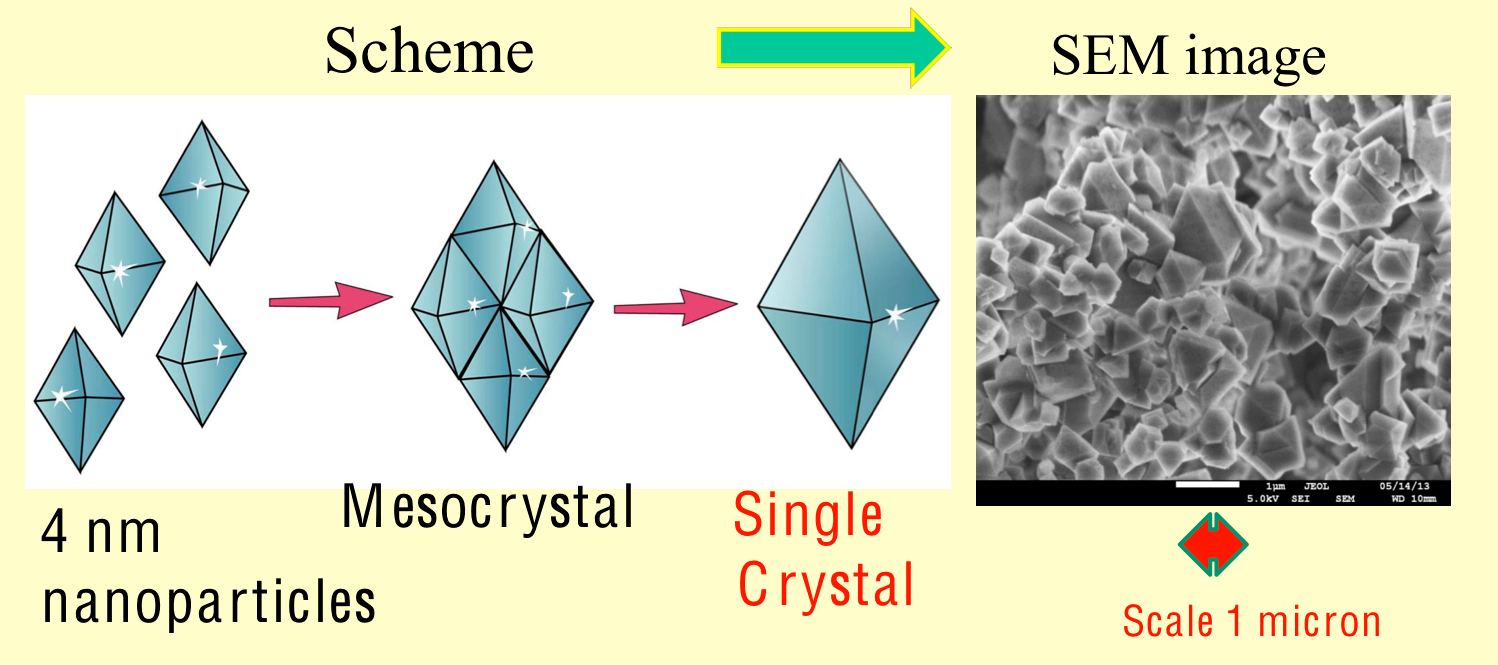invité par Patrick SOUKIASSIAN
Abstract:
On the turn of the last century, the newly coined word “nanotechnology” (NT) has become one of the most popular and widely used terms. Carbon nanostructures have been considered as the main initial materials suitable for the NT since the fullerene discovery. This presentation will addressed new features of technology, structure, properties and applications of a nanocarbon family member – the detonation nanodiamond (DND).
Purification, de-agglomeration and functionalization of industrial DND: It is well known that a non-vanishing amount of residual metal impurities in DND, mainly 3d transition metals is an important and unsolved problem of industrial DND technology for several DND applications. We demonstrate a method for super-purification of the industrial DND and EPR as an effective characterization method for control the purity of DND destined for biomedical applications. A commercial powder of DND and their aqueous suspensions consist of submicron agglomerates of 4 - 5 nm crystalline diamond grains. We have recently submitted a method for disaggregation and production of stable hydrosol of 4 nm isolated DND particles. We have demonstrated that 4 nm DND hydrosols produced by annealing in air and hydrogen atmospheres differ from each other by sign of their zeta potentials and submit a model of this effect. One of the attractive features of DND is possibility for surface functionalization by metal using ion exchange, we demonstrated a possibility of surface modification DND agglomerate by Cu, Co, Ni, Fe and detected three dimensional position of the metal atoms. One of unusual properties of DND, we revealed is oriented attachment growth of submicron diamond crystals from 4 nm grains after high pressure and high temperature (HPHT) sintering. This HPHT treatment has an affects to thermal conductivity and concentration impurities and defects in sintered microcrystals.
Applications of detonation nanodiamonds: In view of the unique combination of DND properties, it appeared only reasonable to assume that this material would find broad application in various areas of technology. Probably the first DND application was associated with development of abrasive compositions for ultrafine mechanical polishing of hard surfaces, including optical elements, semiconductor substrates. Another rapidly expanding area of DND application is the technology of seeding at CVD diamond film growth. Progress in the technology of formation of crystallization centers based on the use of suspensions of 4-nm DND particles permits one presently to prepare diamond photonic crystals.
First reports on the use of DND as catalyst carrier have recently appeared. By using a neutral, chemically resistant phase in the form of particles on which a thin film of catalyst, primarily a metal of the platinum group, was deposited, one can enhance substantially the catalysis efficiency, while at the same time cutting noticeably the consumption of noble metals. A promising application of DND as biomarker is based on using its luminescent properties deriving from nitrogen-vacancy defects in the crystal structure of its particles. High-pressure sintering of DND reveals the presence of nitrogen luminescent centers N0 (N-V)- in concentrations as high as 10-20 cm-3.
Oriented Attachment Growth of Single Diamond Crystals from NanoDiamonds.

http://www.ioffe.rssi.ru/index_en.html#
Séminaire SPCSI - Informations pratiques
Entrée sur le site du CEA de Saclay pour les séminaires SPCSI
Afin de pouvoir entrer sur le site du CEA de Saclay veuillez adresser les données personnelles suivantes par courriel à Christine Prigian et Catherine Julien (secrétariat) un avis d’entrée vous sera alors délivré:
Nom:
Prénom:
Date et lieu de naissance:
Nationalité:
Nom de l'employeur:
Ces informations doivent être envoyées au mieux deux jours avant la date du séminaire.
Lors de votre venue vous devez vous présenter avec une carte d'identité ou un passeport en cours de validité. L'entrée sur le site se fait par l'entrée principale ou porte Nord (suivre le lien ci-dessous), un badge vous y sera remis. Demandez à l'accueil le Bât.466, ils vous renseigneront.
Les séminaires se déroulent au Bât. 466, pièce 111 (1er étage).
En cas de problème vous pouvez contacter le secrétariat au : 01 69 08 65 32 / 40 12.
Formalities for entering the CEA Saclay site for SPCSI seminars
To enter in CEA Saclay you need to send the following personal data to Christine PRIGIAN and Catherine Julien (secretariat):
Informations utiles/Practical informations - Contact
Informations: Access
Contact: Christine Prigian et Catherine Julien
Last Name :
First Name :
Place and date of birth :
Nationality :
Employer Name :
These informations must be preferably sent at least two days before the seminar date.
When you come you must have a valid ID card or passport with you.
The entrance in CEA Saclay is through the main entrance or north entrance (see link below), a pass will be delivered. Ask at the “accueil” the path for the building 466. SPCSI seminars take place in room 111 (first floor).
Any questions/troubles do not hesitate to contact our secretariat : 33 (0)1 69 08 65 32 / 40 12.










